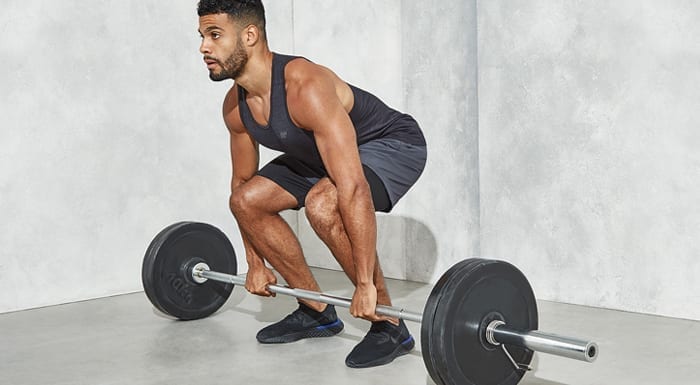 The Deadlift: Deadlift Variations, Form & Benefits | The Zone
The Deadlift: Deadlift Variations, Form & Benefits | The ZoneTop navigation Profile menu Explore ShapeExplore FitnessHealthy EatCelebrities Mind & BodyLifestyleVideoProfile MenuAccount Follow usThe Complete Guide to the Dead All the mortal varieties you should know, also, what muscles each mortal lifting works. Did he ever bow to clean the dog doo off the sidewalk? Congratulations! You've made a mortal uprising. The same happens if you have ever picked up a kitten or a child, hasuled your latest Amazon deliver inside, or dropped and then retrieved your iPhone from the floor. In fact, any movement that involves sticking to your hips and collecting something to be technically qualifies as a mortal uprising, according to the strength and conditional specialist Alena Luciani, M.S., C.S.C.S., founder of . Unfortunately, many lifts move away from making mortal weights in the gym for fear of damaging your backs (or ego!). But here's the thing: "As long as you do the mortal uprising in good shape and load the bark smartly, you won't hurt your back, or any other part of your body," says Luciani. On the contrary, "Making and dominating, the deadly lifting can help you grow old, keep you free from injuries and strengthen you," he says. That's why we did a tapping to Luciani and Alan Shaw, a certified CrossFit Level 2 coach and owner of Charleston, NC, to gather this guide in the mortal uprising. Then they explain the benefits of the dead uprising, how the mortal uprising, and the best variations of the mortal uplift to add to your exercise routine. Why should you be stealing? Two words: preventing injuries. "If you can't get up properly, the likelihood of you pulling a muscle or stopping your back when something is collected is high," says Shaw. Especially as they get older, knowing how to kill can be the difference between maintaining their independence and not, he says. (Hey, there's a reason the CEO of CrossFit Greg Glassman) Besides, the mortal is a killer move to win. What muscles do liftings? No, that's not an exaggeration. "The mortal uprising is a real movement of the whole body," says Luciani. Notably, the riders work their: For people with jobs on the desk, the lifting is especially beneficial. "When you spend all day sitting, your back chain weakens as your previous string becomes more dominant," says Luciani. This imbalance increases the risk of injury both in life and in sport. "Making back-chain exercises like the deadly lifting helps close the force gap between the two parts of the body and reduces the risk of injury," he says. (Related: )What's more, the dead lift actually works its core better than most go-to (read: boring) core exercises like sitting or crunch. In fact, Luciani says that the mortal uprising can replace the sitting in her exercise routine completely. "The movements like the crispy only work your superficial ab muscles [also the most superficial level]," he says. The deadly lift, on the other hand, works the one that keeps you high, protects your spine, reduces the risk of injury and helps you do things like kicking a ball or throwing a frisbee. Different types of dead liftings First, dominate the conventional mortal barbell. Then see the other different types of dead uprisings below (including form tips for each). All these liftings work their hammocks, gluteos, core, quadriceps and lower and upper back, but alternating between the different variations of mortal elevation can point specific muscles, improve general strength and remove the boredom of training. Barbecue of the If you're new to the move, ask a coach or coach to check your transfer form. Or, video yourself and then play the video back, looking and comparing to the performance points below. If your lower back turns at any point during the lift, release the weight. If that doesn't correct rounding, it could be a mobility problem. So instead of lowering weight to the ground, Shaw suggests just lowering weight to the knees. Looking for an additional challenge? Make it a deadly, deficit bridge standing on a platform (box, bank, step) while making the elevator. Lifting promotes a greater range of motion, thus recruiting more muscles and burning more calories. Just keep in mind: the deadly deficit bridge requires some decent mobility, so Luciani recommends only (!) to give the deadly deficit a turn if you have been complemented by your mobility or you can touch your whole damn hand to the ground. (Also keep an eye out for these.)A. Put on with hip-width feet, barbell pressed against stirrups, the braided core (). B. Keep a flat and proud black breast, hinge on the hips to bend the torso forward, pushing the backside, until the hands can reach the hairdresser with straight arms. C. Grab the bar with the palms in front of the spindles, hands on the back. Screw the roses in the bar to involve the lats. (Think: Throw your hands slightly out.) D. Look forward to keeping a neutral neck. Then, keeping your arms straight and straight, tightening your buttocks and pulling the bar at the front of your legs until it uncovers. E. Keep a flat back, hinge on the hips and slide the bar on a straight path along the front of the legs to start over. Conventional pump chain Time for a quick visualization exercise. Think of a barbell with a large dish at each end. Now think of two dolls. The handles in a doll are much lower than a loaded barbell, Luciani explains. That means that you can reach the dolls further to the ground, taking the muscles of the bleeding through a wider range of motion compared to the deadly traditional barbell lifting. (Great, you don't need to get to the ground, you can stop where your mobility limits you.) Beyond that, because the weights are controlled separately, "the loading bridges are a great way to address any muscle imbalance between the right side and the left side," says Luciani. "And pulling two separate dolls instead of a barbell really forces you to compromise your average line for stability, so it has additional benefits to strengthen the core," he says. The one downstairs? Because the fattening shape of dolls makes them a little harder to hold on, you're just not going to be able to pick up as much as you can with a barbell. A: Stand with hip-width feet, a wrist in each hand, palms in front of the thighs. B. Hold your core. Then, keeping your arms straight, push back to slide both dolls down the fronts of your legs at the same time. C. Continue down until the weights touch the ground, or until you sit on your hamstrings, which comes first. D. Keep a proud chest, press on feet to stand again, squeezing glutes at the top. Elevation of the Romanian dead of one leg "When it comes to later chain exercises, in my opinion, the Romanian mortal uprising of one leg is the best," says Luciani. Why? Because the one-legged RDL not only #regar sus hamstrings, glutes, lats, and the rotating muscles... it works them unilaterally, aka one at a time. "Forcing your limbs to work independently is essential to correct muscle imbalances and ultimately creating a stronger body and middle section," he says. (P.S., too.) The first time you try this movement, don't be arrogant. Start lighter than you think you need. You can do this with a barbell, like a conventional postmark, or you can go lighter using dolls or a bell. "I recommend lifting a fourth to a third of what you can lift with a conventional mortal uprising, and slowly increasing from there," says Luciani. A: Stand with your feet stacked under your hips. If you use dolls or a kettle, hold on both hands in front of your hips. Weight of movement on the left leg, right foot slightly behind, swinging the toes. B. It actively presses the left leg on the ground and shoots the right leg backwards while turning forward on the hips, lowering weights along the front of the left leg to the height of the thin middle. (If you use a barbell, grab the barbell with both hands, fully extended arms and separate shoulder-tooth, palms in front of the spindles.) C. Keep a tight core and a flat back, at the same time pull the right leg down to find the left while pulling the weight up the left leg to return to position, tightening the leg gluteum to the top. Sumo Deadlift Instead of taking the hip posture that you take with the conventional deadline, for the mortal uprising I assume you will widen your feet. "This shortens the distance that the barbell has to travel to the top of the rep, which increases the weight you can lift," says Luciani. The wider posture also increases the intensity of your glutes, quads and hip aductors have to work during the movement. A: Stand with your feet twice wide shoulder, your fingers point out to the outside to be screwed at 10 and 2 o'clock. B. Position barbeque against the spindles so that, when looking down, the toes look down the front side of the bar. C. Brace core. Keep a straight back, bend your knees and walk forward on your hips to grab the bar with both hands using a grip of your hand, shoulder-anchor separately. D. Press through heels to lift the ground bar, pushing hips forward and squeezing glutes while stopping as quickly as possible. E. Put the bar back to the ground, keeping it as close as possible to the body and without rounding back. Hex Bar Deadlift Surprise, surprise! For this variation, you'll need something called "sex bar" or a trap bar. The hexagonal bar forms like a giant hexagon with mangos on each side. "You step inside the bar, and then instead of coming in front of you to hold and lift the weight, you grab the handles on the side," Luciani explains. (Here's a guide for—and how much they weigh.) The benefit? I could force you into a better deadly form. "It's easier to get into a good starting position when you don't have to support yourself." It's less likely that you round or put undue pressure on your column, he says. In fact, a 2016 study published in the finding of the hex bar launchers activate more leg musculature and less back musculature compared to a straight barbell. The more you know! Right step of the model in the center of the hex bar with separate hip-width feet. B. Push back and bend to the knees until the hands can reach handles with straight arms. C. Remove the chest and pull the shoulders back and down. Then, keeping the plane and arms closed, straighten the legs to stand. D. Keep your back flat, hinge on your hips and bend your knees to carefully lower the bar again to start. Romanian Deadlift All these mortal variations are going to hamstrings hamstrings, but the Romanian mortal lift works them more. That's because each repeat begins with you standing, weight at the level of the thighs (unlike weight against your shins). And, instead of going down all the way to the ground, the lowest until you feel a stretch in your hamstring before you return on foot, Luciani explains. In a conventional mortal uprising, their hamstrings get a bit of "brother" at the top and bottom of each row. Romanian mortal uprisings remove that, which increases the amount of time their hamstrings are under tension. The result: hamstring wins. Charge Note: No ** load the barbell to the weight you would use for conventional mortal uprising. Lighter! The Romanian mortal uprising will continue to support your strength goals, but because of the way the weight is loaded into this movement, and the amount of time your hamstrings are under tension, you will not be able to lift so heavy. And if you don't have a barbell, don't worry. You can make this movement with dolls, bells or a mini bell. (Related: )A. Stand with the hip-width feet, bar pressed against the spindles. Brace chore and torso point forward to grab the bar with straight arms, shoulder-tooth hands apart. Stay flat, pull the bar to the stop. This is the starting position. (If you use another type of weight, take it and keep it in front of the thighs to start.) B. Keep your knees soft and flat, push your hips back and lower your weight along your legs. Instead of lowering weights to the ground, stop when there is a stretch in the hamstrings. C. Hamstrings Squeeze and core to bring the bar back to start. Squeeze shines on top. How to Incorporate Deadlifts in your training Ultimately, it depends on how long and systematically you have been strength training, your level of comfort in the weight room, and . But Luciani recommends doing 4-6 games of 3-8 repetitions with at least 90 seconds of rest between sets. "Don't sneak into the rest," he says, "Your body needs the rest to recover so you can hit the weight and move it well. "If you're not sure how much to get up, Shaw says you start slow and low. "A good goal for someone new to lift is to work to lift their body weight," says Shaw. "Once you hit that, a good second goal is to hit 1.5 times body weight." Advanced elevators can lift 2 to 3 times body weight. (More here: )"If you feel it bad, or what you're experiencing is pain, for," says Shaw. "All the great benefits of the shuttle comes out of the window when your shape is not good." Good. Comments Participation options Comment on this project Log in Magazines & More informationConnectOther Meredith Sites View image
The different types of lifts killed by Silence May 21, 2020 Silence, , Mortal lifting is one of the most effective composite exercises we can do. Some coaches swear for it as one of the only moves we need to make to develop all strength and round resistance. The thing about mortal uprising is that it points to certain muscle groups, then recruits many more to help support and stabilize movement. It is simple to incorporate into our training routine and allows progression when working the weight. The back chain is a group of muscles that run through the back of your body including your back, gluts and hamstrings and are all involved in the deadly lifting. The quads also receive attention, which means that with this simple exercise we are working a large proportion of our lower body. We're sure we don't need to say any more. It is clear that the mortal is an important player in force training. So, here are some variations to incorporate into your routine. Conventional mortal transport Let's start with traditional mortal transport. There are three phases for the mortal uprising and it is important to nail them all. Set up means you're in position. The barbell should be on the ground in front of you, with the bar playing or almost touching your shins. Take the bar with both hands, slightly off the legs. Go forward on your hips as you do and make sure your weight is predominantly in your heels. Get your shoulders out of your ears. The impulse is the great movement. Using strength on your legs and glute, drive up and lift the bar from the ground. The lock is the grip on the top. When you stand, your arms must be straight on your sides. Keep your back and core tight. Drive your hips in the bar and tighten your buttocks. Make sure your shoulders are down and back. Variations of grip There are many different ways you can grab the bar when the mortal uprising and often simply lowers to the preference. Double grip is the most natural way to lift. Your hands must be on top of the bar, with your thumbs underneath. This is the most common and safe way to grab the barbell. Double grip Mixed grip involves one hand over the bar and the other under the bar. This is used when your grip force becomes a limiting factor in the uprising. Many power lifters struggle with the issue of not being able to rise so heavy because their grip strength is fatigued, but not their strength for the mortal uprising. So, to fight this and stop the bar coming out of their hands, they put one under. The only thing to see here is that you change your hands frequently. Having a different grip recruits slightly different muscles in your arms and you don't want to develop any imbalance. Mixed grip The hook is when you connect the thumb below the bar and wrap your fingers around it. It helps stop the bar by sliding, but it's quite uncomfortable and will take some to get used to. The hook grip Variations of the dead uprisings So you've chosen your grip, you've nailed the conventional mortal lift, and now you're looking to mix it up. Well, you're lucky. There are many different types of mortal uprising that you can do to test your strength. They vary in difficulty, range of movement and muscles recruited. You can incorporate them into your training routine as you wish. Romanian mortal transport The Romanian mortal uprising is a slight variation of the conventional mortal uprising that recruits the glutes and the hares more and the lower back less. It has a shorter range of motion and may not put the barbell back on the floor. There is a slight difference in the way it moves in the hips, which means that the tension is maintained mainly in the hammocks. The unique RDL RDL leg represents the Romanian mortal lift, so this version has the same goal as the previous one, but working one leg at a time. This means that it is often made with a silly bell or kettle instead of a bar. It looks very different from the double leg version and is quite the balance test too. Say hello to central control. Highest Mortal Lift The word sumo in relation to exercise often describes a broader posture and that is the case with the mortal uprising sumo too. With a wider posture than shoulder width, the lifting increases the muscles and glutes of the legs, as well as the traps on the back of the shoulders. There is less emphasis on muscles on the back as the erector spine. Hex bar deadlift The hex boat can also be called the deadly trap bar. It only depends on what you call the used bar. It's a hexagonal bar, which enters and lifts from the handles. It allows a more uniform weight distribution and is useful for perfecting your facelift and heavy lifting. grip handle This variation sees your hands much wider and more separate than the traditional mortal lifting. The catch grip increases your range of motion, making your back and traps work harder. Deficit deadlift For this variation, you need to stand in a block or plate that raises you about 4 inches off the ground. This means that when you lower the bar, you have to travel further than conventional lifting. This growing range of movement recruits more from its back chain and more from its quads. It also makes it a lot harder, so you won't be able to lift that heavy. Once you've nailed your dead lifting form and lowered the grip, there are a lot of mortal uplift variations to prove. You can find out what's best in your routine. The conventional mortal is one of the most effective exercises you can do and should definitely play a role in your trainings. With all these different types, you can choose a deadly lift to complement the muscles you are looking to aim. Pay attention to your later chain with the deficit deadly bridge or the highest mortal uprising. Get heavy on your hamstrings with the RDL. Or push the bottom of the back with the deadly grip lift. It's your Hussle, so it's up to you. Related posts: Find an article Categories More of this category

9 Types of Deadlifts Did you know that when youre deadlifting youre actually working all muscle groups... | Deadlift, Deadlift variations, Deadlift grip
3 Types of Deadlifts | The What, Why + How of Conventional, Romanian + Sumo
Deadlifts: Which Type is Best For You? | T Nation
How To Deadlift: Form Guide, Tips And Different Types | Mirafit
8 Deadlift Variations - Benefits And How To Perform Each - GymGuider.com
Pin on Chest workouts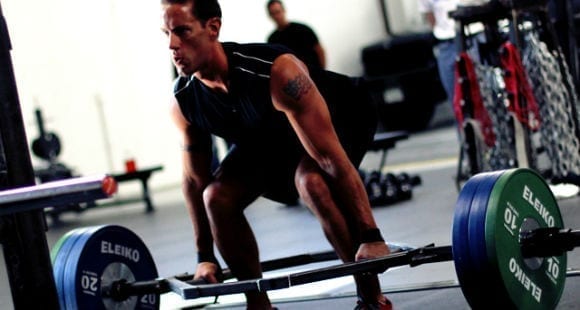
The Deadlift: Deadlift Variations, Form & Benefits | The Zone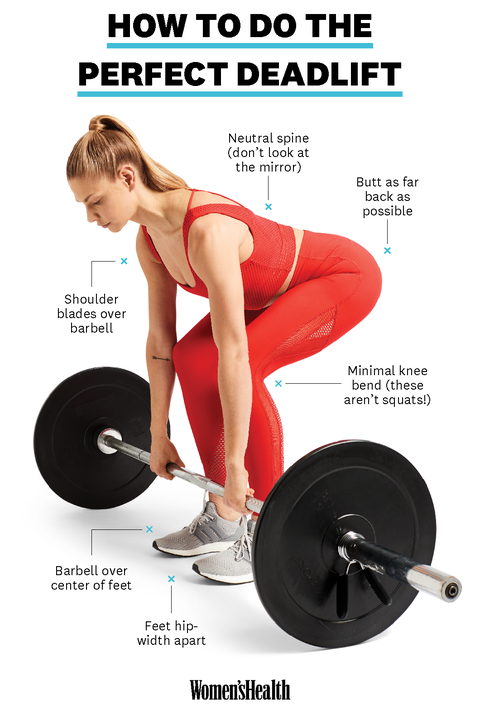
How To Deadlift The Right Way - Form Tips, Variations, Benefits
Deadlift vs. Romanian Deadlift: Comparisons, Benefits, and Precautions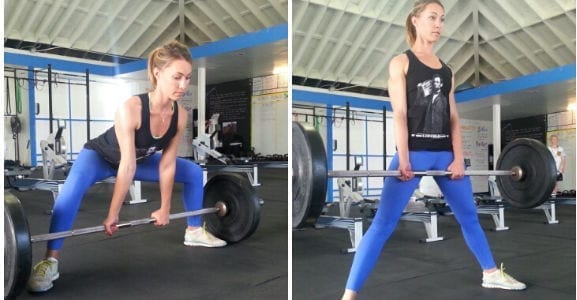
The Deadlift: Deadlift Variations, Form & Benefits | The Zone
Deadlifts vs. Squats | Syatt Fitness
Deadlifts—-the KING/QUEEN of all workouts – luv2befit
3 Types of Deadlifts | The What, Why + How of Conventional, Romanian + Sumo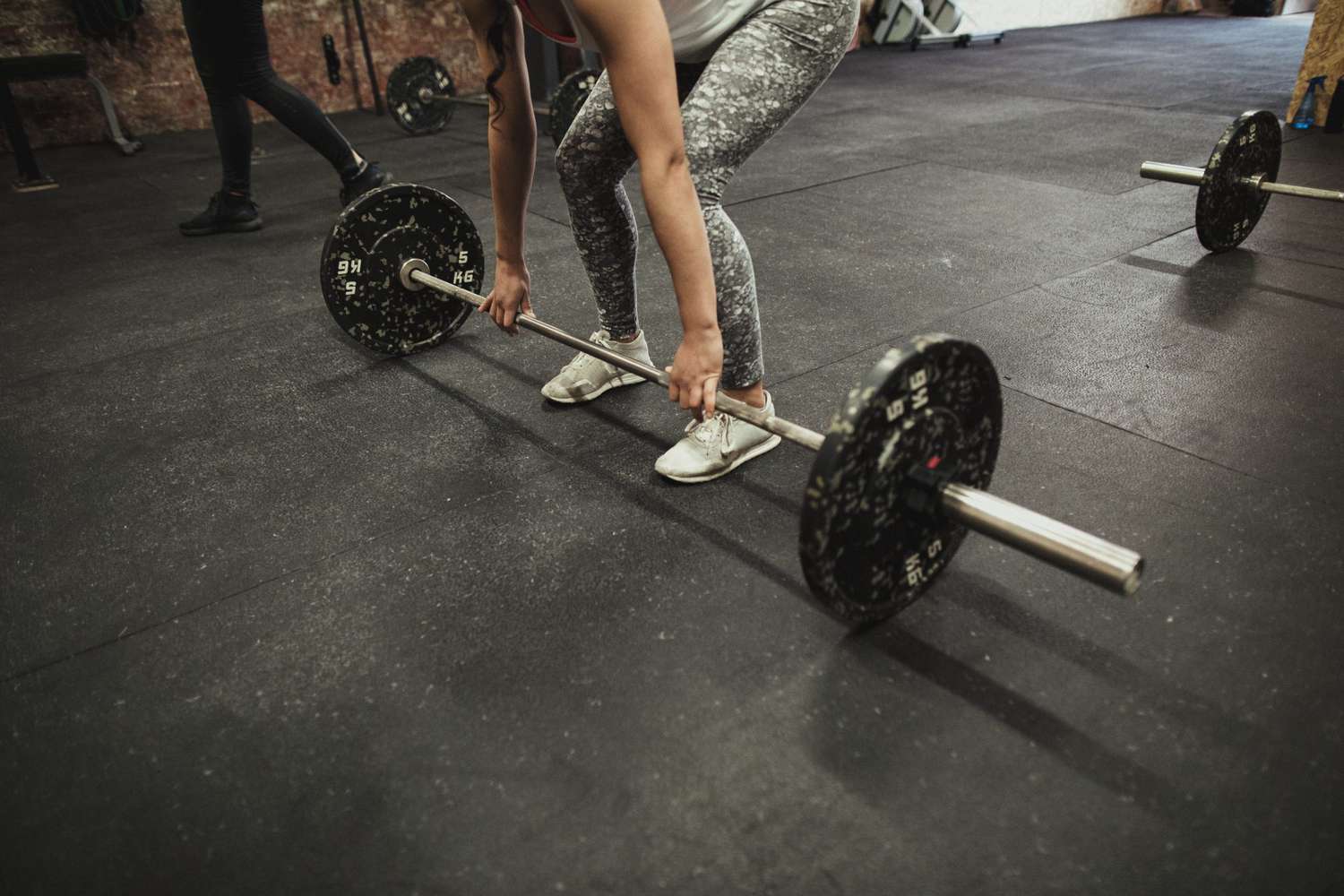
The Complete Guide to Deadlifts | Shape
How To Deadlift: Form Guide, Tips And Different Types | Mirafit
8 Deadlift Variations - Benefits And How To Perform Each - GymGuider.com | Deadlift variations, Deadlift, Fitness training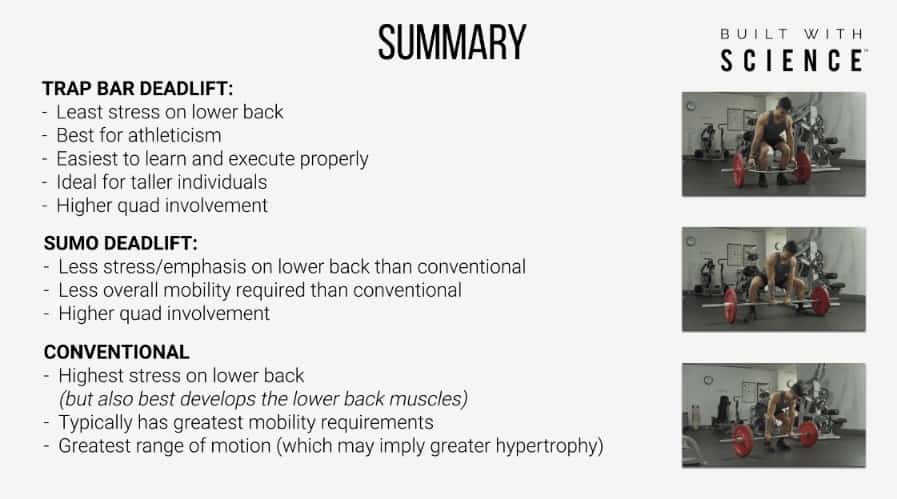
What Type of Deadlift is BEST for You? (Strength vs Size vs Athleticism)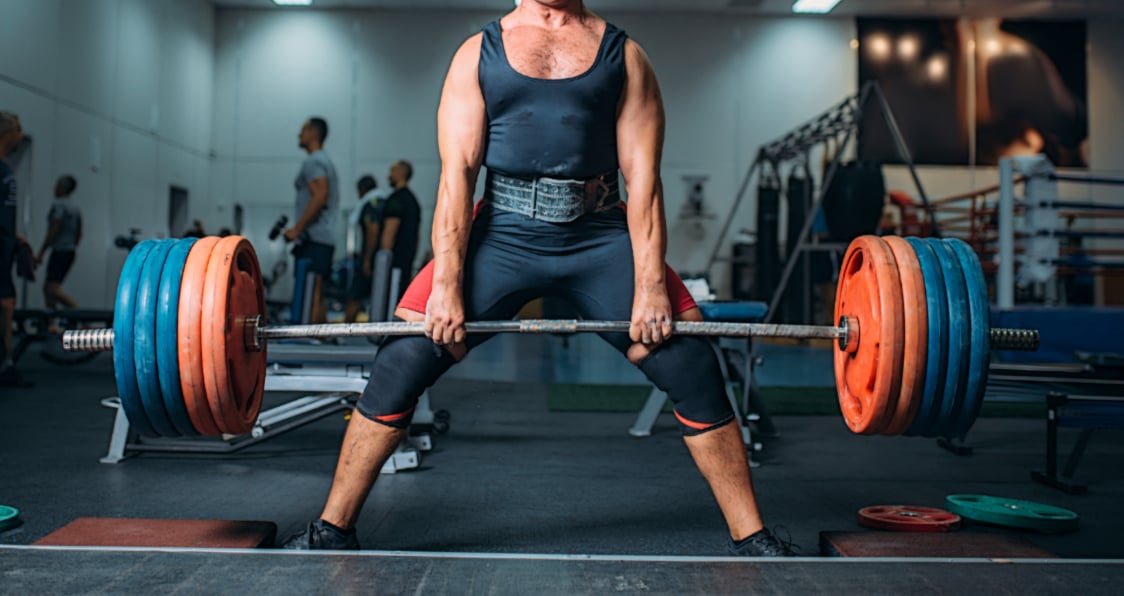
Different Types Of Deadlifts You Should Be Doing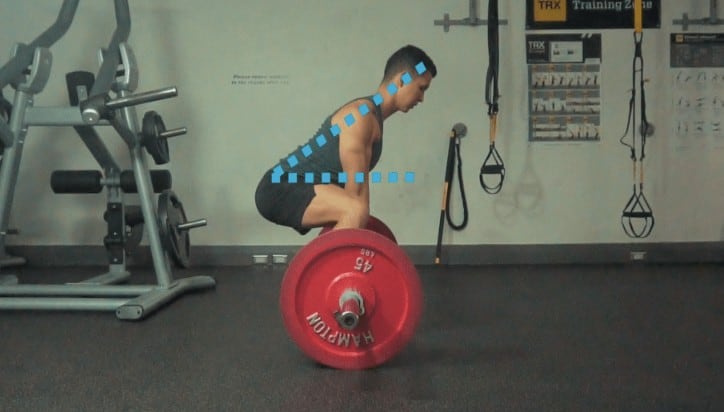
What Type of Deadlift is BEST for You? (Strength vs Size vs Athleticism)
Discover Which Type of Deadlift Is Best for You - Fitness and Power
Deadlift for Your Body Type — How to Choose Your Deadlift Form
Top 10 Deadlift Benefits | Deadlift Variations | FITPASS
Deadlift vs. Romanian Deadlift: Comparisons, Benefits, and Precautions
How to Deadlift with a Barbell: 5 Tips for Beginners | Train Your Body With Voicu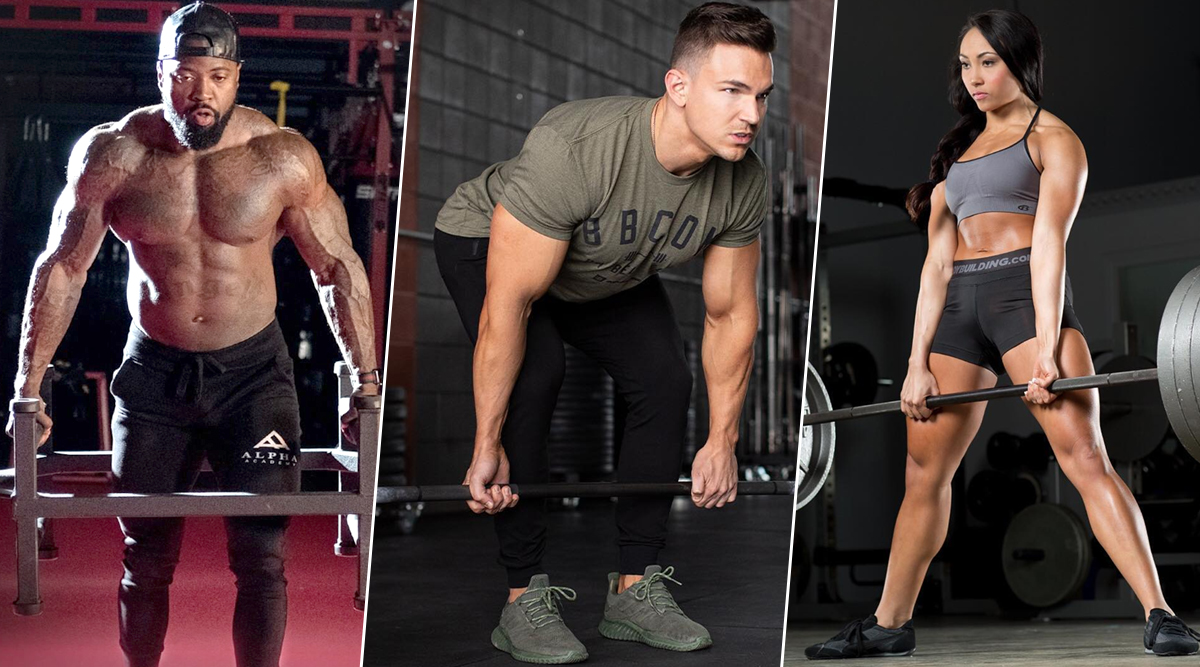
Deadlift Workout and Its Types: Why You Shouldn't Skip This Posterior Chain Exercise Important For Lean Muscle Mass Development (Watch Videos) | 🍏 LatestLY
Which Type of Deadlift is Best For You? (3 KINDS!) - YouTube
19 Squat & Deadlift Variations | T Nation
Squat - Bench - Deadlift - Posts | Facebook
Which Deadlift is Right for Your Body Type? | Breaking Muscle/21-3498608-Deadlift-GIF-b76ce11dc6ef403fa0bf19f252e4b39e.gif)
How to Do a Deadlift: Techniques, Benefits, Variations
What are the dangers of deadlifts? - Quora
How To Deadlift: Form Guide, Tips And Different Types | Mirafit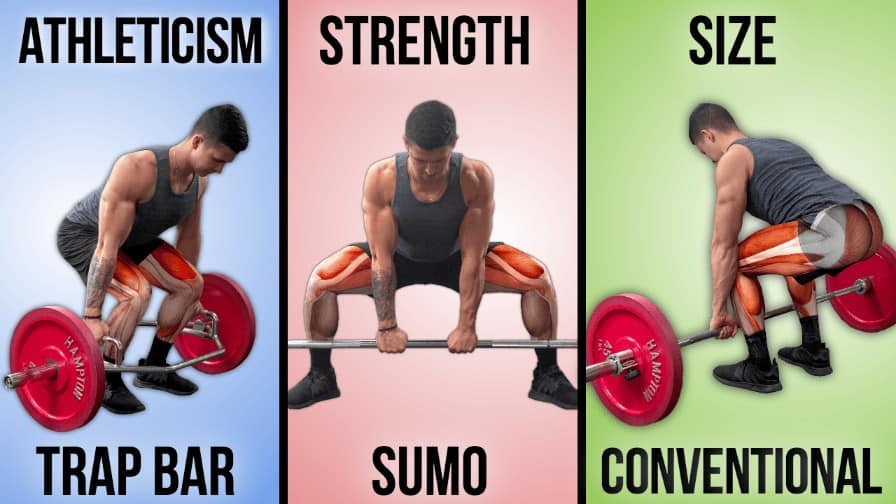
What Type of Deadlift is BEST for You? (Strength vs Size vs Athleticism)
Deadlift Variations! It is important to understand the different deadlift variations and how to properly … | Deadlift variations, Deadlift, Weight training workouts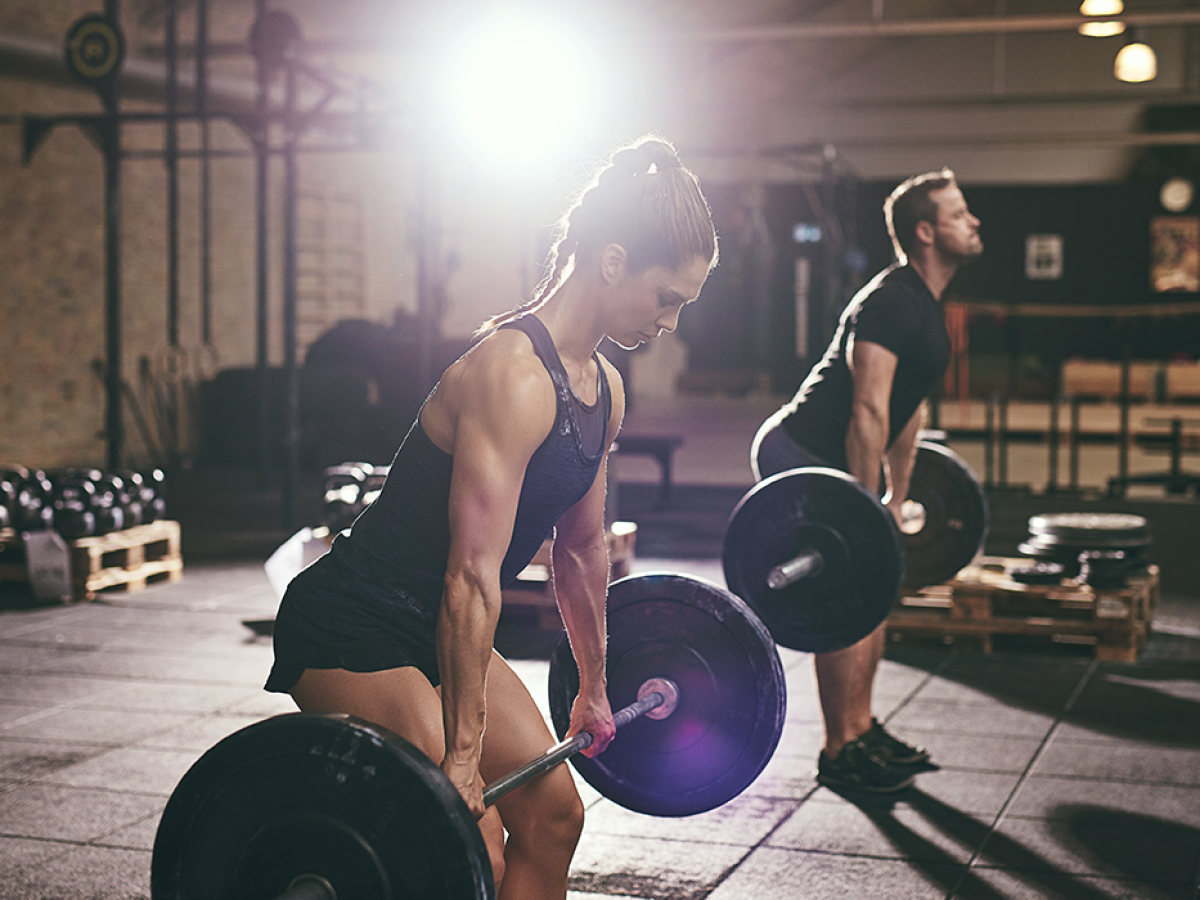
The different deadlift types
Deadlift Variations for Added Challenge and Better Form | ISSA
Training Talk: Deadlift on Leg Day or Back Day?
33+ Amazing Benefits of Deadlifts (for Every Part of Your Body)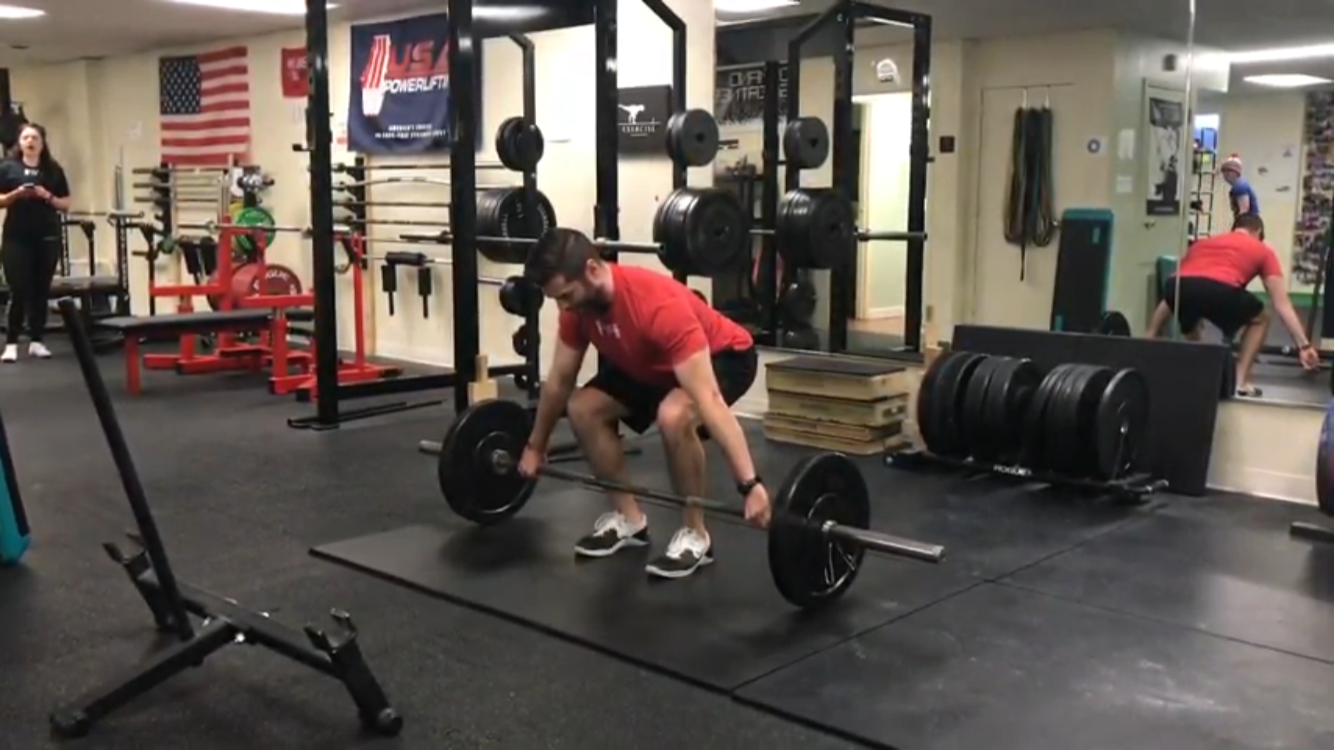
What's with all the different types of deadlift? — TFN Training
3 Types of Deadlifts | The What, Why + How of Conventional, Romanian + Sumo
 The Deadlift: Deadlift Variations, Form & Benefits | The Zone
The Deadlift: Deadlift Variations, Form & Benefits | The Zone




























/21-3498608-Deadlift-GIF-b76ce11dc6ef403fa0bf19f252e4b39e.gif)









Posting Komentar untuk "different types of deadlifts"